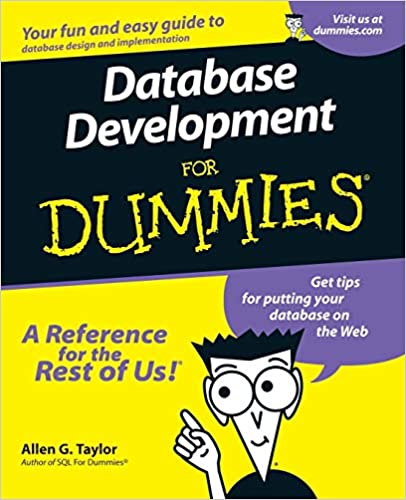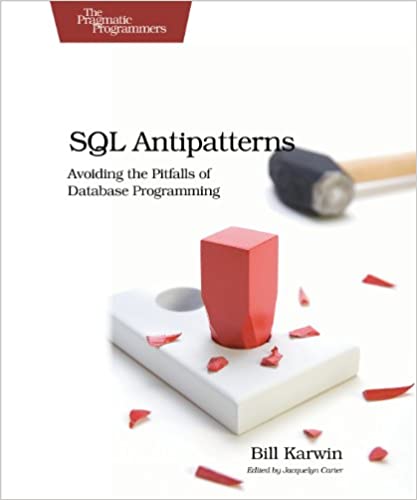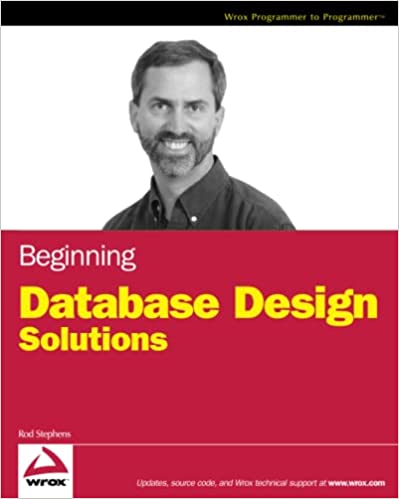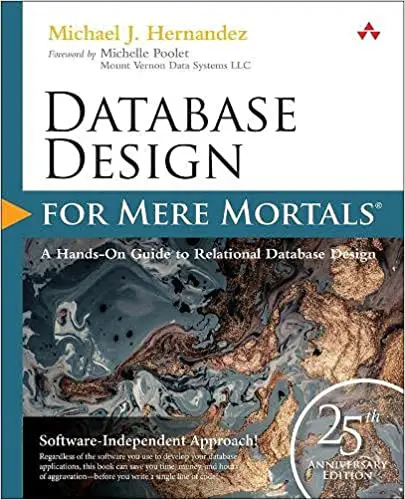Databases are the driving force behind many applications in the modern world, and play a pivotal role in maintaining and storing data, e.g: Websites. In this tutorial, we have short listed the Best Books on Database Design, complete with a description of the book and the audience for which it is most suited for.
The 6 Books on Database Design that we will discuss:
- Database Development For Dummies
- SQL Antipatterns: Avoiding the Pitfalls of Database Programming
- Beginning Database Design Solutions
- Database Design for Mere Mortals
- Database System Concepts
- Six-Step Relational Database Design
Database Development For Dummies

Author: Allen G. Taylor
Publication Date: November 16, 2000
Pages: 360
Database Development for Dummies is an entry level book about Databases, focusing on introducing beginners to the world of Databases, and the base concepts required to build one.
Here are the key fields that the book promises to teach you.
- Model data accurately
- Design a reliable functional database
- Deliver robust relational databases on time and within budget
- Build a user-friendly and secure database applications
- Deploy your database on the Web
For people looking to learn about Databases from a Book without any complex and text-heavy jargon, this might just be the book you were looking for. On the flip side, those looking for very in-depth look into Database design should explore other options.
SQL Antipatterns: Avoiding the Pitfalls of Database Programming

Author: Bill Karwin
Publication Date: July 10, 2017
Pages: 334
The Author of this book, Bill Karwin is an experienced teacher in SQL and Database Design, having taught and responded to the queries of thousands of students. Based on these experiences, and observing the most common errors and pitfalls his students fall into, the Book SQL Antipatterns was written.
The goal of this book is to help you solve various common problems that can occur while designing databases. It helps you identify, explain, and correct a unique and dangerous antipattern. You may not even realize it, but there are likely already such antipatterns in your database design, such as Index Shotgun, Keyless Entry, Fear of the Unknown, and Spaghetti Query etc.
This is a great book for Database designers of all levels. Learning how to create a Database is easy. Knowing how to create a GOOD Database, is a much harder task. And it is for this reason, that this book was written.
Beginning Database Design Solutions

Author: Rod Stephens
Publication Date: October 27, 2008
Pages: 552
The book, Beginning Database Design Solutions, aims to provide its readers with proven methods and tools for designing efficient, reliable, and secure databases. Aimed at IT developers and programmers of all levels, this book makes use of many examples and exercises which encourage you to think, and solve problems related to Database design on your own.
This book is highly praised by its readers for its clear, concise and well-delivered explanations on Complex Database concepts. Beginners with no prior experience would surely benefit from starting out with this book.
Towards the later chapters, the reader is taught how actually create Databases using popular real-life applications, Access 2007 and MySQL. So not only do learn the theory, but are also taught how to apply it practically.
Database Design for Mere Mortals

Author: Michael J Hernandez
Publication Date: December 17, 2020
Pages: 640
With the release of it’s 25th Anniversary edition, Databases for Mere Mortals continues to teach its readers how to create secure, efficient and reliable databases in the modern world, and how to take advantage of the various online database applications available to us.
The Author, Michael Hernandez will guide you through everything from the very basics, from planning your database structure, to defining tables, fields, keys, table relationships, business rules, dvs views. You will learn practical ways of improving data integrity, how to avoid common mistakes and pitfalls, and when to break the rules, and do something different.
As the title suggests, this book is aimed towards a beginner – intermediate level. Experienced developers already familiar with databases will not benefit from this book as much.
Database System Concepts

Author: Abraham Silberschatz, S Sudarshan and, Henry Korth
Publication Date: April 26, 2019
Pages: 1376
The first thing that stands out about this book is the vast size. Over a 1000 pages long, hoarding a wealth of information and knowledge, this book is one of the cornerstone texts of database education. Aimed primarily towards students, the textbook presents the basic concepts of database management in an intuitive manner, encouraging students to begin working with databases as quickly as possible.
The book is designed primarily for students of the undergraduate level, while also containing enough supplementary/introductory information for advanced learners at a graduate level. If you fall within this target audience then this book is a very solid option for you.
Six-Step Relational Database Design

Author: May 11, 2013
Publication Date:
Pages: 232
This book bridges the gaps between database theory, database modeling, and database implementation by outlining a simple but reliable six-step process for modelling data.
Six-Step Relational Database Design, makes use of three case studies, where a situation is described to you, and then the six-step process is applied on it to show you how to practically construct a database in such a situation.
This book is aimed primarily towards those with some prior knowledge of Databases. Those who are completely new to this field would do better with one of the other books mentioned in this article.
Further Reading: If you are interested in Databases, you might also find the topic of “Operating Systems” interesting as well. Check out our compilation on popular books for Operating Systems here!
This marks the end of the Best Books on Database Design article. Any suggestions or contributions for CodersLegacy are more than welcome. Questions regarding the article content can be asked in the comments section below.
